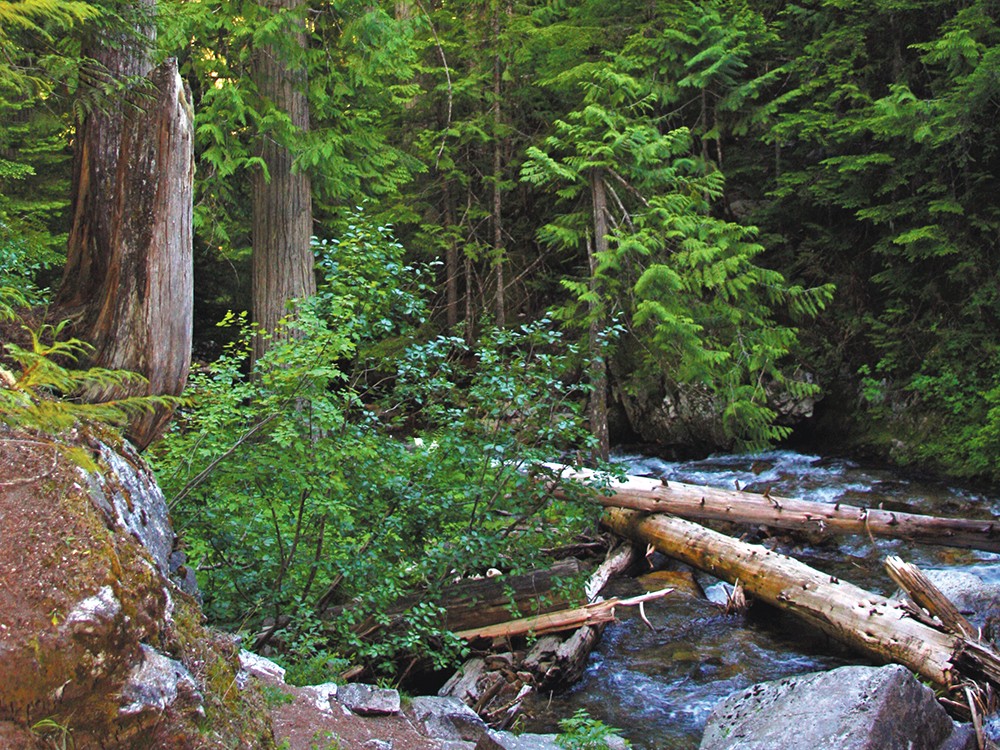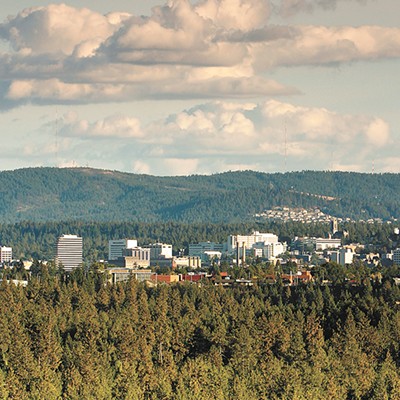In about 900 A.D., in the forests of what is now North Idaho, a cedar sprout poked through the ground near a small stream. Meanwhile, Danish Vikings sacked the city of London for what would be the last time, algebra was in its infancy and Russia had just been founded.
More than a millennium later, the same cedar is still standing.
Settler’s Ancient Cedar Grove, which is up the north fork of the Coeur d’Alene River, is one of three spots in the region offering a cool, shaded walk over groomed trails, and of the three, is easily the most accessible by car.
It’s awe-inspiring to be in the presence of a living organism that old. Diane Robbins of Star Valley, Wyo., visited Settler’s Grove in 2007 when she lived in Osburn, Idaho. The grandmother of five is back vacationing the historic mining area and included a trip to see the trees again with her grandkids.
“I just wanted them to learn a little about history,” she says.
These cedar trees have withstood the elements, fires, drought and the advancement of Western civilization. They’re not threatened by the logging industry anymore because the grove is federally protected.
Jason Jerman, a silviculturist (someone who specializes in the cultivation of forest trees) for the U.S. Forest Service in Coeur d’Alene, says a tree is defined as “ancient” when its trunk diameter exceeds 5 feet. Many of the trees in Settler’s Grove easily exceed that.
“Most of those trees are well over 500 years old,” Jerman says.
That was around the time of the Catholic Reformation, Columbus beginning his third voyage to the New World and Leonardo da Vinci beginning work on the Mona Lisa.
The largest tree in the grove has a diameter of about 9 feet, which Jerman estimates makes it about 1,200 years old.
Jerman says that accurately determining a cedar’s age is difficult because of a number of variables like weather patterns, the abundance of moisture and the environment where the tree starts out. If it’s surrounded by a lot of older trees, they will absorb more moisture from the ground, making it more difficult for the younger saplings. Once the older trees die or are removed, the younger ones get more nutrients and sunlight.
He adds that the large trees are more than 120 feet tall, but many are hollow due to fire or disease. Because of cedars’ resilience, the disease or damage only affects the tree for a while, until it grows over the affected area. On the outside, a solid surface with thick bark will grow; on the inside will be holes and cavities. As a result, it can be nearly impossible to get a good core sample, which shows the yearly growth rings throughout the life of the tree and provides the most accurate way of determining a tree’s age.
One factor working in this particular grove’s favor is that its environment is prone to flooding. “It’s sort of a natural fire extinguisher,” Jerman says.
On the other hand, snow does quite a number on the cedars. The grove is cluttered with the remains of trees that have toppled over as a result of accumulation. In many cases, root beds the size of a Chevy Suburban have been ripped out of the ground as a tree fell.
Settler’s Grove is easy to reach by car. Halfway between Prichard and Murray, Idaho, turn left and drive about 6 miles. The last 4 are a dirt road.
Aside from the fresh air and pleasant silence of the remote area, walking through the grove makes you think of what it would be like to be in the same spot, listening to the same trickle of the same small stream, for longer than any human could comprehend: before European settlers arrived in the Inland Northwest, before the Civil War, even before the American Revolution.
These trees have prevailed. They measure how brief a human life is, and prove what was already happening before anyone came along will continue long after someone born today has lived a full life.





















